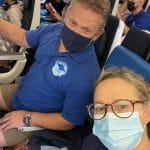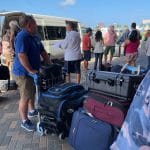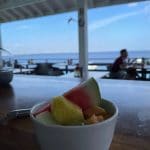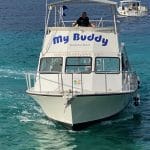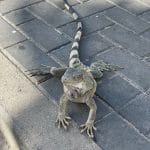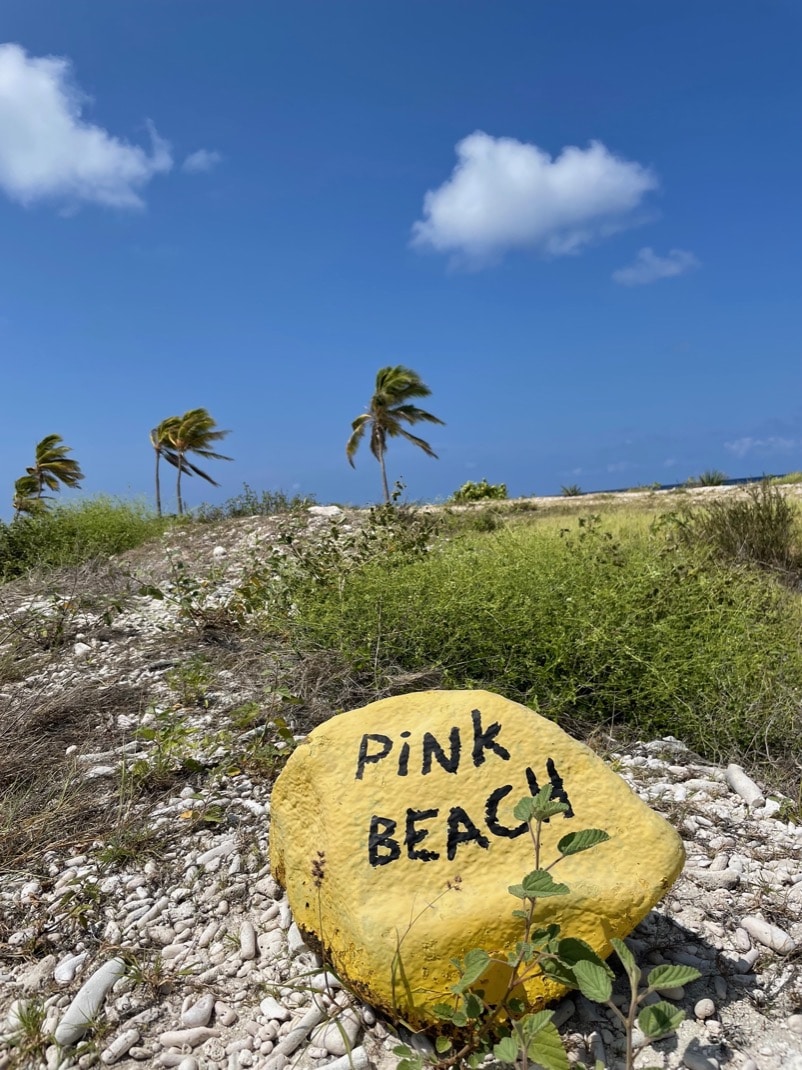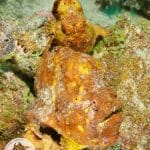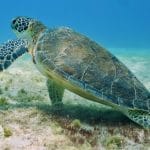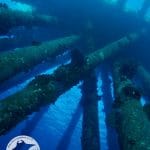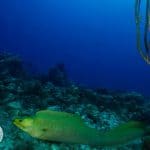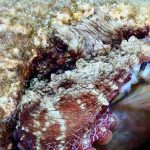News
The Scuba Genies head to Bonaire! Part 1 of 2

In the first of this two-part blog, The Scuba Genies share their trip report from the Come Dive with Us hosted trip to Bonaire in September 2021…
Travelling during the Covid pandemic has been challenging for some, impossible for most, and missed by all. We have been scanning the rules and regulations daily, and as soon as the UK Government allowed us, we were off!
What was supposed to be a trip to Mexico for a gang of 12 of us, just like most trips over the last 18 months, we were forced to change as the travel rules changed – we have been trying to get to Bonaire for ages, and this became the perfect opportunity – at last!
With our bags packed, negative test results and completed Bonaire health forms in hand – we made an early start for Heathrow, prepared for an 0630 departure. A quick flight and we landed in Amsterdam. As a Dutch Caribbean territory, all flights from the UK to Bonaire on KLM go via Amsterdam. In the airport, we met up with the rest of the gang who had travelled from Birmingham. After a quick layover we took off for Bonaire, where we arrived about 9 hours later. Our health documents were checked at the airport, and we grabbed our bags. It seems odd to have to fly East to then go West, but as we stepped out of the minibus at Buddy Dive Resort, only 10 minutes after leaving the airport, the sunshine and blue sky told us it was worth it!
Our accommodation for the group was made up of two 3-bedroom apartments, a stone’s throw from the water, dive shop, dock and Blennies, the main restaurant and bar. Buddy Dive also has 1- and 2-bedroom apartments along with studios, all comfortably furnished with either a garden or ocean view.
Each 3-bedroom apartment is spread over two floors – but a floor up from ground level. The ‘ground’ floor of each apartment offers a double bedroom (beds can be configured as twins or double in all rooms), a bathroom, lounge with balcony, and a very well-equipped kitchenette. Microwave, toaster, hob, fridge/freezer with ice-maker and enough pots, pans and utensils to satisfy the avid cook! On the upper floor, there are two further double rooms with ensuite bathrooms, both with balconies of their own. Each bedroom is air-conditioned, and the lounge and kitchen have celling fans. All in all, quite perfect for a home away from home for a fortnight!
The rules of group travel say we must unpack (empty bags onto floor or bed), sort kit out (look at dive bag and save it for later), put cameras together (er….NO!) and hit the bar – so being rule-abiding people that we are, this is what we did. Picking up the rental van for our stay would have to wait!
The next morning after breakfast, served in the Ingridients restaurant and right on the water, we attended the Buddy Dive orientation. The staff gave us a quick tour of the dock and resort including the famous drive thru tank shed offering both air and nitrox tanks ready and waiting to be loaded into your vehicle. Check in at the dive centre was easy… we all completed our diver forms online before arrival so with a quick hello we were handed locker keys for our kit storage. Time to head back to the room and get ready for our first dive!! That is why we’re here after all!
As with all trips, the first dive was a check dive, so we climbed down the steps into the water off the dock to go an explore Buddy Dive Reef. Finning over the sandy bottom, past the coral restoration project ‘trees’ and following well laid lines with directional markers we hit the reef after just a minute or two where you can drop to 35+ metres over simply stunning corals. This reef, just like the rest of the sites we dived, is super-healthy and teeming with juvenile fish wherever you look. Moray eels, turtles, octopi and HUGE tarpon on our first dive! What a great start!
The following day we decided it was time to explore the island. We picked up our 6-person minibus from Reception, pulled up to the drive thru tank station and grabbed 12 well filled Nitrox 12l aluminium (A-Clamp – not DIN) cylinders. With our guidebook in hand, off we went driving on the right of course, in search of marine life.
There are over 50 dive sites scattered around the coast of the main island, and even more on the island of Klein Bonaire accessible by boat. We chose a comfortable start by picking dive sites to the South where the entry seems to be a little easier on old knees and hips. We packed up sandwiches we made after a quick shop at the supermarket the day before, along with waters and a few essentials – towels, sunnies and bug spray.
I won’t bore you with every dive site name and description – the guidebook is the tool for that – but it is more than safe to say that we dived, dived and dived again! Every dive gave us far more than we expected, and the marine park surrounding the whole island delivered the goods without fail. Super healthy corals, plentiful marine life, warm and very clear water at 30 degrees made life easy. Parking the van up at the marked dive sites wasn’t difficult, and a few strides across the sand was far simpler than we had expected.
I will say that some sites are a little more challenging to get into the water from – anything more than three or four steps doesn’t float my boat! We adapted our entries for the group – some kitting up in the water, some not, but the rule of thumb quickly became step in up to thigh-depth, inflate bcd, fall flat on your back and paddle out before putting your fins on. Simple! Getting out of the water was pretty much the reverse of the above – stand up when you can, remove fins, and then navigate the rocks and sand channels before you walk up the beach. Nothing that an over-weight, under-tall chap in his mid-50’s with dodgy knees and even dodgier hips couldn’t cope with! (That is me by the way…..no offense to anyone else intended and no animals were harmed in the writing of this either).
We saw stuff – lots of it! Huge tarpon, French and Grey Angelfish, forests of Christmas Tree worms, anemones with Peterson, sexy and cleaner shrimp, clinging crabs, nudibranchs – especially lettuce-leaf slugs, coral-banded shrimp, lobster and so much more. Turtles everywhere, trumpet-fish in unbelievable numbers, and that was generally the story – all in very good visibility too! The corals and huge sponges were stunning with fascinating reef-structures offering all sorts of hidey-holes for critters!
There were some really special sited that we loved, and Salt Pier was one. The Cargill solar salt facility is easily found with its distinctive line of white salt pyramids.Each pyramid, roughly 50-feet high, can contain up to 10,000 metric tons of 99.6 percent pure salt. Even more noteworthy, in addition to the acres of salt ponds, the facility is also home to largest pink flamingo sanctuary in North America. Our very own Chloe has written an in-depth blog about Bonaire and its pure salt so be sure and check it out!
Back to the diving! We were given a hint to drive just past the pier to park where we would find an easy sand entry to the site. We kitted up and finned out through the shallows where we encountered three juvenile hawksbill turtles along with a few smooth pufferfish fighting to feed on patch of sponges, and then made our way under the immense structure of the pier. There are several platforms supporting the conveyor belts that move salt to the container ships and there wasn’t much diver-traffic to contend with. We were amazed by all things weird and wonderful – big scorpion fish hiding under the metal work, angelfish battling for food, schooling fish up above you, and frogfish! Barracuda, Caribbean reef squid, spotted drums, octopus, oh! and more frogfish! Even a flying gurnard in the shallows! What a dive! And as it is shallow, it can be a very long dive too, especially with the 200-210 bar fills the drive-thru often gave us.
Check back for Part Two of this Blog tomorrow!
Find out more about the worldwide dive itineraries that The Scuba Place offers at  www.thescubaplace.co.uk.
www.thescubaplace.co.uk.
Gear News
Introducing the TR-80, IR-50 and CS-30 Regulators from DYNAMICNORD

Whether you are a beginner or a professional diver – with the three new main regulators from DYNAMICNORD, everyone will find their favourite regulator. They all look super stylish.
Excellent performance with the TR-80
Quality and performance are the be-all and end-all for regulators. It is not for nothing that the TR stands for Tec Reg. The innovative design of the TR-80 guarantees absolute reliability – even in ice-cold waters.

Perfect breathing effort at 0.8 J/l / certified for diving in waters below 10 degrees / structural design made of solid brass for best cold protection / membrane-compensated design with dry seal of the first stage / reduced exhalation effort thanks to optimized exhalation membrane and bubble deflector / adjustable Venturi (dive/predive) and adjustment knob for individual inhalation comfort / innovative design of the front cover prevents free-flow in strong currents or when diving with scooters / design made of sandblasted brass, matt chrome finish / 2 HP and 4 LP outlets / mouthpiece made of high-quality, anti-allergic silicone for maximum comfort.


Amazing underwater adventures with the IR-50
The IR-50 is the top regulator for advanced and experienced divers. Natural breathing is the essence of this regulator.

Ideal breathing effort at 0.8 J/l /certified for diving in waters below 10 degrees / compensated membrane / adjustable venturi (dive/predive) and adjustment knob for individual inhalation comfort/ outlet valve and deflector for minimum exhalation effort and reduction of bubbles on the face / design made of sandblasted brass, matt chrome finish / 2 HP and 4 NP outlets / mouthpiece made of high-quality, anti-allergic silicone for maximum comfort.


The Workhorse – our CS-30
For diving centres and diving beginners – the workhorse stands for strong construction, reliability and robustness. Perfect for your training.

Optimal breathing effort at 0.8 J/l /recommended for diving in waters above 10 degrees / non-compensated piston / adjustable venturi (dive/predive) / outlet valve and deflector for minimum exhalation effort and reduction of bubbles on the face / design made of sandblasted brass, matt chrome finish / 1 HP and 3 NP outlets / mouthpiece made of high-quality, anti-allergic silicone for maximum comfort.


Octopus OP-30
The OP-30 is the ideal addition to all DYNAMICNORD regulators. It is identical in construction to the CS-30.

The TR-80, IR-50, CS-30 (DIN & INT) regulators and the Octopus OP-30 are available from DYNAMICNORD dealers and in the online store.
DYNAMICNORD – Your Outdoor Companion.
Marine Life & Conservation
Paul Watson Released as Denmark Blocks Japan’s Extradition Bid

Renowned anti-whaling activist Paul Watson has been released from custody in Greenland after spending five months in detention. Denmark’s Justice Ministry rejected Japan’s request for his extradition, citing insufficient guarantees that his time already served in custody would be credited against any potential sentence.
The 74-year-old Canadian-American was arrested on July 21 in Nuuk, Greenland’s capital, when his ship docked to refuel. His arrest was based on a 2012 Japanese warrant related to a 2010 encounter in Antarctic waters. Japan alleged Watson obstructed operations and caused damage to a whaling research ship during efforts to disrupt illegal whaling. Watson has consistently denied these claims, maintaining his commitment to marine conservation.
Denmark, which oversees extradition matters for Greenland, concluded that while the legal conditions for extradition were met, the lack of assurances from Japan regarding time-served credit made extradition untenable.
In a video shared by his foundation, Watson expressed gratitude and relief, saying, “After five months, it’s good to be out… and good to know they’re not sending me to Japan.” He added that the most difficult part of his time in custody was being separated from his two young sons.
Watson is a pioneering figure in marine conservation, known for founding the Captain Paul Watson Foundation in 2022 after decades of activism with the Sea Shepherd Conservation Society. His bold efforts to defend marine life have earned him widespread support, including from celebrities and conservationists. His work has also been featured in the acclaimed reality TV series Whale Wars.
Watson’s lawyer, Jonas Christoffersen, praised the decision, stating, “We are happy and relieved that Paul Watson is now free.” He added that Watson is eager to reunite with his family and continue his vital work.
The arrest occurred while Watson’s vessel, the M/Y John Paul DeJoria, was en route to the North Pacific with a team of 26 volunteers to intercept a Japanese whaling ship. His foundation described the arrest as politically motivated and emphasized that Watson’s actions were focused on ending illegal whaling practices.
Japan resumed commercial whaling in 2019 after leaving the International Whaling Commission, asserting that whale meat is a cultural tradition. Conservationists, however, continue to challenge these practices, highlighting their impact on marine ecosystems.
Despite the challenges, Watson remains steadfast in his mission to protect marine life and bring attention to whaling practices. His dedication to ocean conservation has made him a globally respected advocate for the environment.
-

 News2 months ago
News2 months agoIconic SS United States to become the World’s Largest Artificial Reef
-

 News3 months ago
News3 months agoBook Review – 52 Assignments: Underwater Photography
-

 Gear News3 months ago
Gear News3 months agoDYNAMICNORD – New German diving brand enters the British market
-

 News3 months ago
News3 months agoExploring Cenote El Pit: A Diver’s Dream
-

 Gear News3 months ago
Gear News3 months agoTry BARE drysuits (and maybe even win one!) this Friday with Sea & Sea at North West Dive Fest
-

 Marine Life & Conservation3 months ago
Marine Life & Conservation3 months agoBook Review: Coral Triangle Cameos
-

 Blogs2 months ago
Blogs2 months agoDive the Egyptian Red Sea this Autumn with Regaldive
-

 News3 months ago
News3 months ago2024 Ocean Art Underwater Photo Competition Announced



